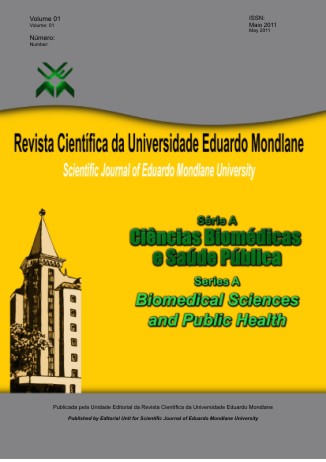MINI-REVISÃO: o papel da recombinação homóloga na emergência de SARS-CoV-2
Palavras-chave:
SARS-CoV-2, Recombinação homóloga, recombinação em vírus RNA
Resumo
Durante a recombinação viral, novas combinações genéticas são geradas a partir da mistura ou cruzamento de dois ou mais ácidos nucleicos de diferentes origens. Esse processo, portanto, exige que mais de um vírus infecte a mesma célula a fim de gerar combinações de novas sequências virais ou moléculas quiméricas. Pensa-se que este processo tenha um impacto na epidemiologia, emergência e evolução dos vírus RNA. Nesta revisão, realçamos a recombinação homóloga e elucidamos como ela pode ter influenciado no surgimento do SARS-CoV-2.
Referências
AUSTERMANN-BUSCH, S., & BECHER, P. RNA structural elements determine frequency and sites of nonhomologous recombination in an animal plus-strand RNA virus. Journal of virology, v.86, n.13, p.7393–7402, 2012.
JI, W., WANG, W., ZHAO, X., ZAI, J., LI, X. Cross-species transmission of the newly identified coronavirus 2019-nCoV. Wiley: Journal of Medical Virology, v.92, n.4, p.1-8. DOI:10.1002/jmv.25682, 2020.
PÉREZ-LOSADA, M. et al. Recombination in viruses: mechanisms, methods of study, and evolutionary consequences. Infection, genetics and evolution: journal of molecular epidemiology and evolutionary genetics in infectious diseases, v.30.p.296–307,
RABADAN, R., LEVINE, A. J., &KRASNITZ, M. Non-random re-assortment in human Influenza A viruses. Influenza and other respiratory viruses, v.2, n.1, p.9–22, 2008.
SCHEEL, T. K. et el. Productive homologous and non-homologous recombination of hepatitis C virus in cell culture. PLoS pathogens, v.9, n.3, p.1-12, 2013.https://doi.org/10.1371/journal.ppat.1003228
SIMON-LORIERE, E., & HOLMES, E. C. Why do RNA viruses recombine? Nature reviews. Microbiology, v.9, n.8, p.617–626, 2011.
TAUCHER, C., BERGER, A., MANDL, C. W. A trans-Complementing Recombination Trap Demonstrates a Low Propensity of Flaviviruses for Intermolecular Recombination. Journal of Virology, v.84, n.1, p.599-611, 2010.
ZHANG, J., & TEMIN, H. M. Retrovirus recombination depends on the length of sequence identity and is not error prone. Journal of virology, v.68, n.4, p.2409–2414, 1994.
JI, W., WANG, W., ZHAO, X., ZAI, J., LI, X. Cross-species transmission of the newly identified coronavirus 2019-nCoV. Wiley: Journal of Medical Virology, v.92, n.4, p.1-8. DOI:10.1002/jmv.25682, 2020.
PÉREZ-LOSADA, M. et al. Recombination in viruses: mechanisms, methods of study, and evolutionary consequences. Infection, genetics and evolution: journal of molecular epidemiology and evolutionary genetics in infectious diseases, v.30.p.296–307,
RABADAN, R., LEVINE, A. J., &KRASNITZ, M. Non-random re-assortment in human Influenza A viruses. Influenza and other respiratory viruses, v.2, n.1, p.9–22, 2008.
SCHEEL, T. K. et el. Productive homologous and non-homologous recombination of hepatitis C virus in cell culture. PLoS pathogens, v.9, n.3, p.1-12, 2013.https://doi.org/10.1371/journal.ppat.1003228
SIMON-LORIERE, E., & HOLMES, E. C. Why do RNA viruses recombine? Nature reviews. Microbiology, v.9, n.8, p.617–626, 2011.
TAUCHER, C., BERGER, A., MANDL, C. W. A trans-Complementing Recombination Trap Demonstrates a Low Propensity of Flaviviruses for Intermolecular Recombination. Journal of Virology, v.84, n.1, p.599-611, 2010.
ZHANG, J., & TEMIN, H. M. Retrovirus recombination depends on the length of sequence identity and is not error prone. Journal of virology, v.68, n.4, p.2409–2414, 1994.
Publicado
2025-04-19
Secção
Artigo de Revisão


